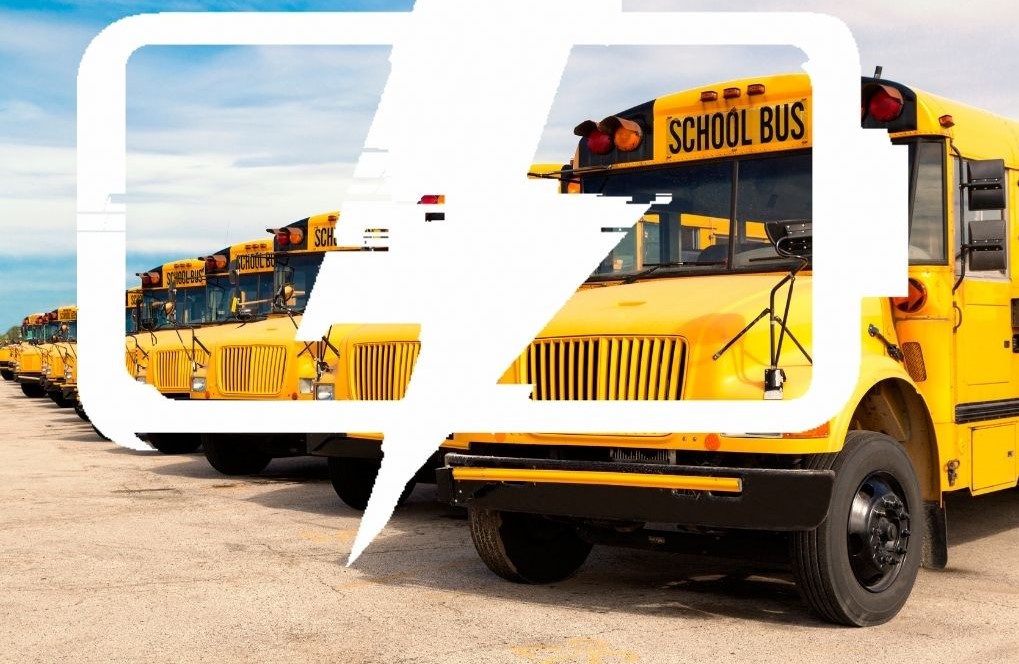The Senate infrastructure bill’s “Clean School Bus Program” (Sec. 71101) is at least ten times smaller than the big school transit producers had hoped for, but it is still a positive for manufacturing, mostly all of it local.
The idea, to move diesel busses out of the market and promote electric, and even propane and natural gas-powered school busses instead, brings in a combined $5 billion instead of the $20 billion some in the industry requested. The $20 billion figure is what was estimated to be needed in order to do away with state subsidies, and create enough order volume that zero-emissions school busses would be within 10% of the price of a diesel-powered one. As it is now if a school district wants to go green and buy a battery-powered bus, they’re looking at paying at least two times the price, the rest of it subsidized by the state, if the money is even available in the first place.
Who Makes Alt-Fuel School Busses?
The bulk of the supply chain for school bus manufacturers is domestic. The power train and the batteries, the lifeblood of EV busses, are almost all made here. The bill does not require this, however, but so far this industry looks to be almost entirely homemade.
There are three main players. They control around 90% of the market: Bluebird, manufactured in Fort Valley, a town of roughly 9,800 people located outside of Macon, GA; IC, a division of Navistar in Oklahoma City and Daimler’s Thomas Built Buses.
Thomas works with Proterra, another small-town manufacturer located in Burlingame, CA. They make EV busses, powertrains, and batteries. Bluebird partners with Cummins, which makes batteries and powertrains in Illinois and Michigan.
The Senate bill revives a sector that has been beaten up by school closures during the pandemic, with less orders for school buses in general. Bluebird laid off hundreds of workers, and is still not back to full capacity of roughly 2,000 employees in Georgia.
Another manufacturer, Lion Electric, is Canadian-based. They survive primarily on Canadian subsidies as they only make EV-powered school buses. They are building a factory in Joliet, IL, a midsized city of roughly 150,000 inhabitants.
There was talk by Chinese manufacturer BYD in California to hop on the EV school bus, but that was when rumor was of a $20 billion set aside in the infrastructure bill. Now that it is much smaller, it is less likely that BYD will try taking market share from newcomer Lion, and the “Big Three”, who have had relationships with school departments for decades.
BYD builds the so-called Type D school bus, which is the bus with the flat front and the engine, usually, in the rear. The Type C is the long yellow school bus with the engine in front and constitutes the majority of the market for all types of power source. Type A is the smaller school bus, made for 35 people or less. All of these can be suited for alternative fuels.
Some 25 million children and teens ride a bus to and from school each day, making it the most heavily trafficked of all transportation in the U.S.
EVs and DC
Electric vehicles increasingly need Washington to build out and subsidize via tax breaks and other incentives.
The Senate has offered two pots of money in its infrastructure bill: a $2.5 billion set aside for EV only, and another $2.5 billion for other alternative fuel sources. The big OEMs wanted it to be all EV because they are gunning for volume, and lower subsidies in order to make it a viable business. For now, selling zero-emission school buses is dependent on subsidies, and local school districts who just want to “green up” their fleet.
It is believed that $20 billion spent over six years would get Bluebird and others to be able to manufacturer a battery-powered bus close to the cost of a diesel one. The $2.5 billion Clean School Bus Program “moves the needle”, but it doesn’t get them away from needing subsidies to sell.
School districts buy buses every year. If the prices were comparable to diesel, industry experts believe EVs would win the day.
Everything depends on order volume. If states don’t have enough subsidy cash, then Bluebird, others, will produce fewer EV buses. Bluebird, for example, the largest of the EV bus makers after Lion, which only makes EV buses, hopes to produce 3,000 EV buses next year.
These are high-skill manufacturing and engineering jobs. Fort Valley’s Bluebird assembly line brings in people from around 40 rural counties who cannot find similar jobs closer to home.
Bluebird was the first to introduce the electric bus back in 1995. They built a prototype for the Atlanta Olympics. Back then, the bus was too expensive to make to scale and they rolled up their manufacturing plans. The technology began to change and around 2015, Bluebird returned to the EV market and began selling EV buses in 2018. Some 50% of their sales are now alternative fuel sources.
IC is just getting in on the EV business and sold their first few school buses this year.
About two years ago, EV buses were as much as three times the cost of a diesel bus. Battery materials and technology have improved and scaled up, bringing the price to within two and half times on the high end. Volume increases have also driven prices lower.
The Senate infrastructure bill also called for more funding for battery manufacturers, as well as research into where U.S. miners can find and process the minerals needed to make EV batteries. For now, the U.S. constitutes a paltry share of the source materials that go into car batteries. The U.S. has 4% of the world’s lithium reserves, less than half that of China. China, meanwhile, is increasing its presence in that and other key segments of the metals market that will power next-generation vehicles, including school buses.













